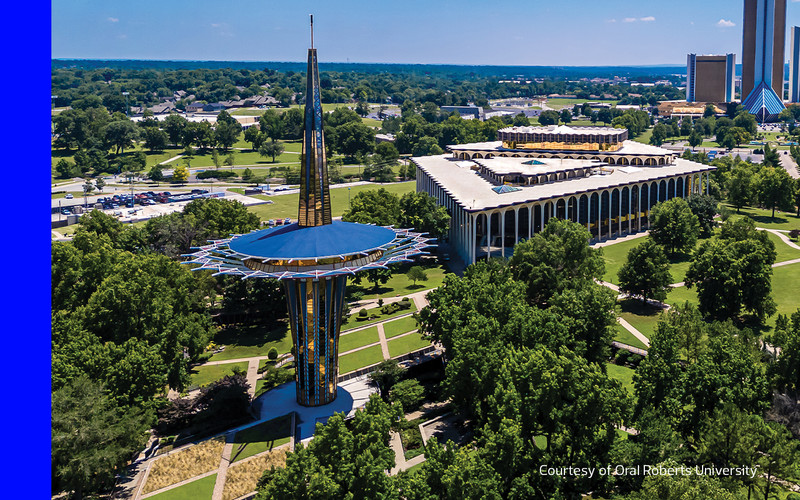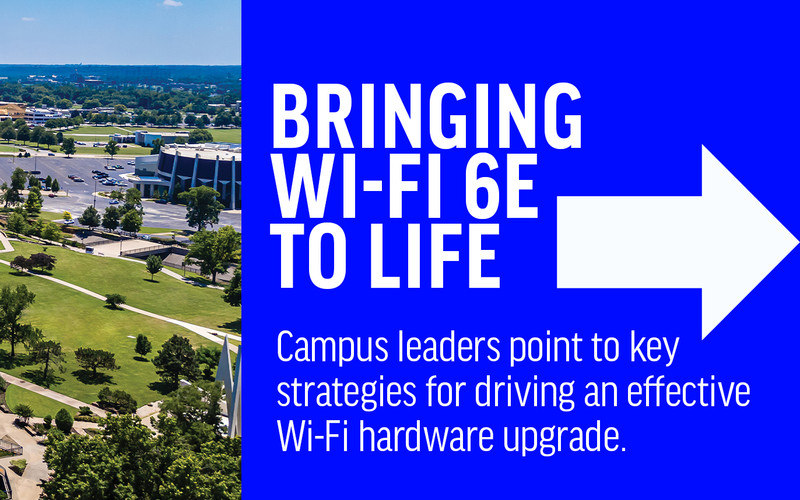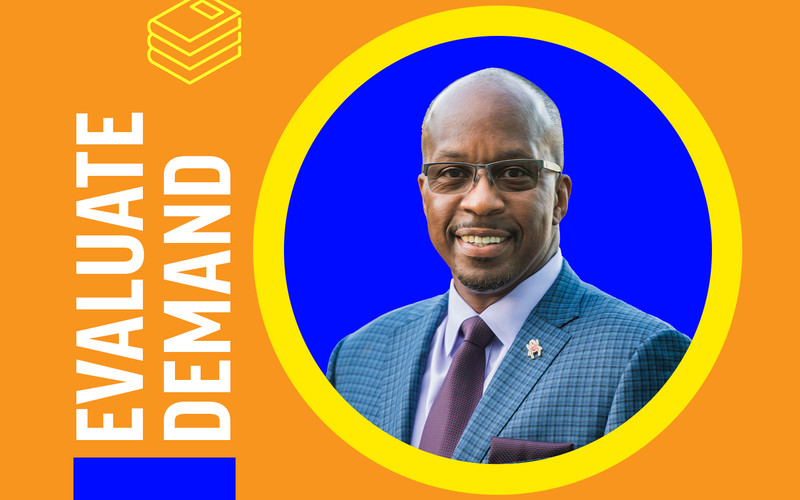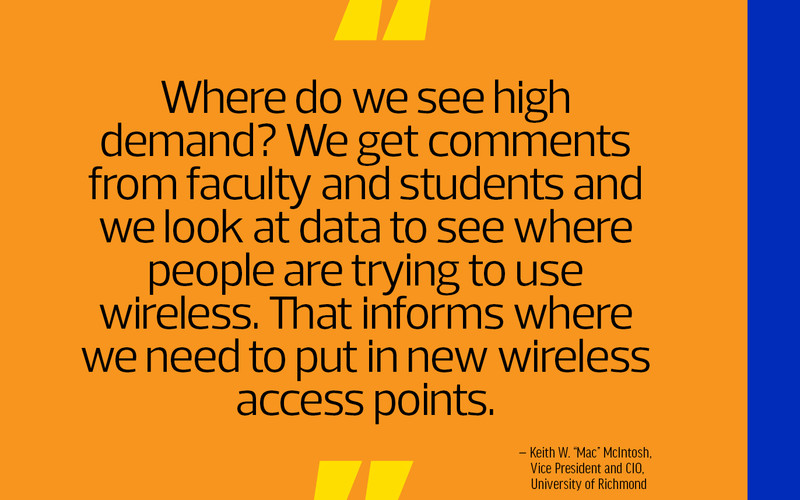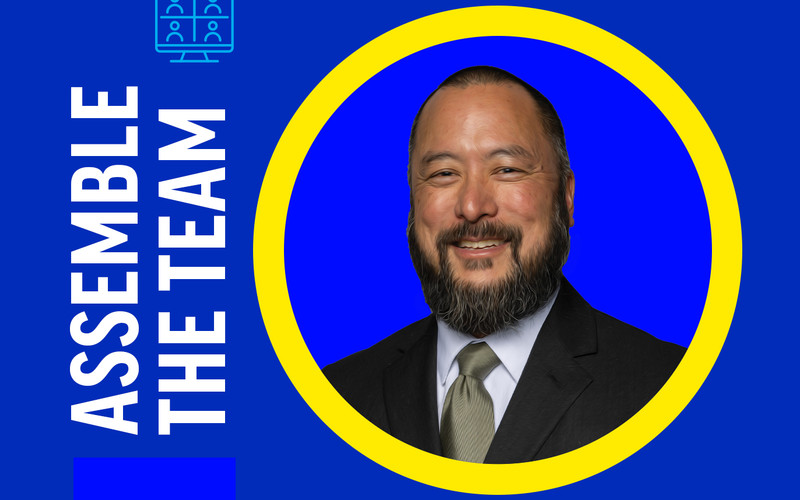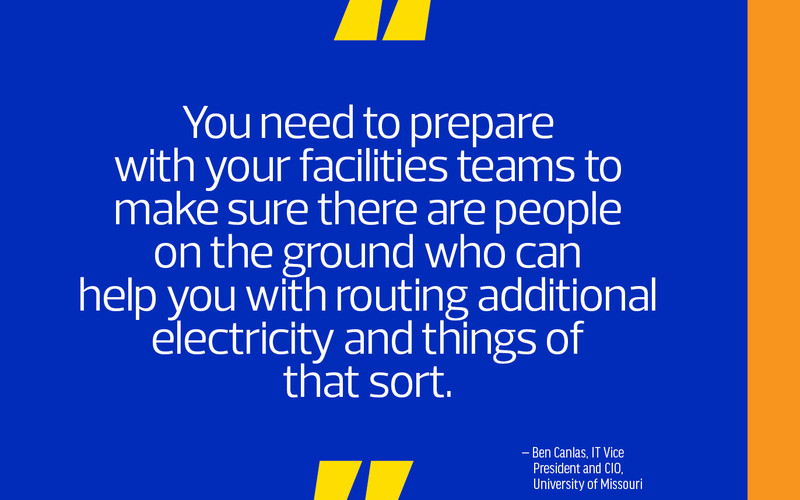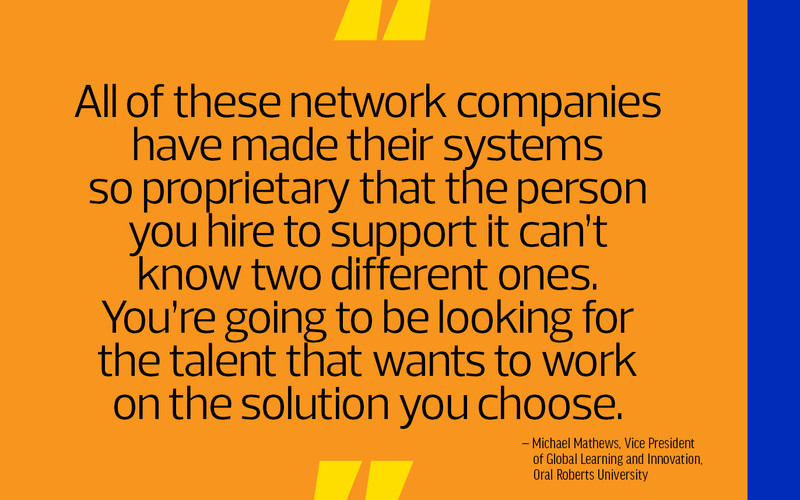Wi-Fi 6E Upgrades Address Wireless Challenges on Campus
Higher ed IT leaders who have undertaken a migration to Wi-Fi 6E describe a common set of motivations. Students may already be facing connectivity challenges, and many are looking to future-proof their tech in support of emerging needs.
At Oral Roberts University, Mathews recently upgraded to Wi-Fi 6E campuswide. He was looking to expand connectivity and to make the most of his investment in high-speed internet.
“We have internet with an incredibly fast rate of speed, but if the data’s congested on campus, that it doesn’t help us. We’re not getting full value from our internet connection running at 8 gigs if we can’t pass 6 gigs through efficiently,” he says. “With 6E, it adds even more separation on the channels, which means your network gets less congested.”
At the University of Richmond, Vice President and CIO Keith W. “Mac” McIntosh turned to 6E to keep pace with demand.
“Our existing wireless data network was installed back in summer 2017, and it’s based on the previous 802.11 technology,” he says. “This will provide our faculty, staff and students with leading-edge wireless technology.”
LEARN MORE: What higher education needs to know about Wi-Fi 7.
As part of the overall IT strategic plan, “we want to make sure we future-proof our campus,” he says. “The demand for wireless continues to increase, and we know that Wi-Fi 6E offers less congestion, especially for our high-density student housing and classroom areas.”
At the University of Missouri System, meanwhile, IT Vice President and CIO Ben Canlas was already feeling the pinch. “We have had reports of connectivity issues, and with some of these older buildings, our wireless did not reach some of the nooks and crannies. We had concerns about network reliability and performance,” he says.
His ongoing Wi-Fi 6E effort “actually started out as a lifecycle refresh project. We have some aging hardware that is reaching the end of its life, and our initial project scope was to replace the core network hardware,” he says.
“As we talked to our customers and our campus constituents, we got a greater understanding of some of the challenges that they have in carrying out their missions: research, teaching and learning,” he says. “So, we expanded it to be more of a modernization project.”








